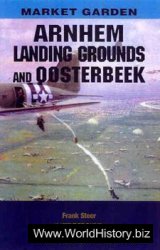Because cannon technology swiftly progressed, however, these devices
steadily became more powerful, reliable, and accurate. One particularly
crucial advance took place in about 1370 when engineers began employing
several long, thick pieces of iron placed edge to edge and held together
by sturdy iron rings. h is allowed for the creation of much bigger
cannons than ever before.
By the close of that century, all large cannons were termed bombards
(the source of the modern term bombardment). h ese monster guns, as
some later writers called them, bore pet names and i red balls of enormous
weight. According to Geof rey Hindley,
“Mons Meg,” now in Edinburgh [Scotland], i red a stone shot
weighing about 550 pounds. “Dulle Griet,” or the “Great Bombard
of Ghent [Belgium],” i red one of over 750 pounds. And
the “Pumhart von Steyr,” (“the bombard of Styria”), in Vienna
[Austria], i red a mammoth shot of 1,530 pounds. Given that
the explosive force of gunpowder was still relatively weak, such
weapons made sense, for that powder was now easily available in
quantity and cheap.43
With the size of the cannons and their shot now making up for their
limited explosive force, it became possible to demolish castle walls. It
took a mere two days, for example, for a German prince’s big guns to
destroy a castle during a siege in 1414. A growing
number of fortresses across Europe met a similar fate
in the decades that followed. h e biggest shock of all
to numerous Europeans came in the pivotal year 1453,
when the Ottoman Turks used their large cannons to
devastate the huge and supposedly invincible walls
protecting the great Christian city of Constantinople
(now Istanbul, Turkey). Historian John Julius Norwich
calls it “a bombardment unprecedented in the history
of siege warfare.”44
|
|
||||||||
|
Www.WorldHistory.Biz
Sundries
 Contact Contact
|
 
8-08-2015, 17:01
An Unprecedented Bombardmen
  |
|||||||
 |
 |
 |
 |
|||||
|
||||||||

 World History
World History





